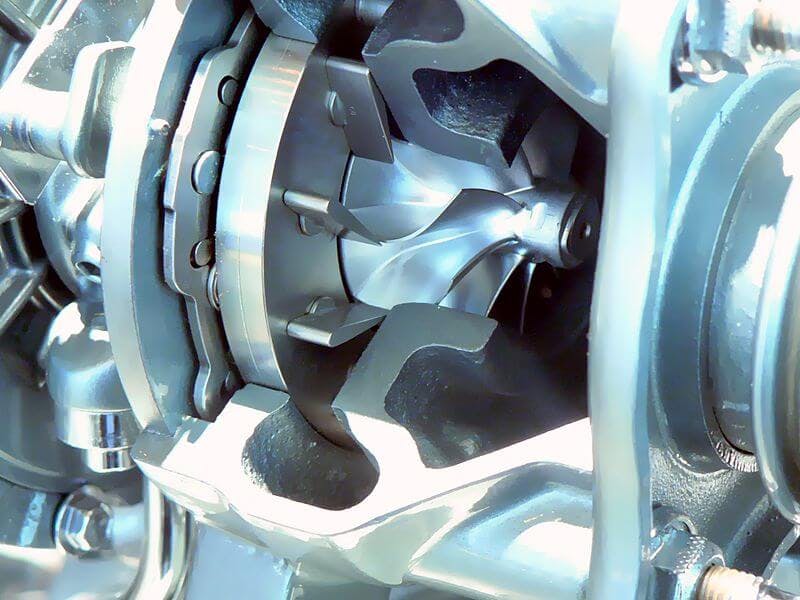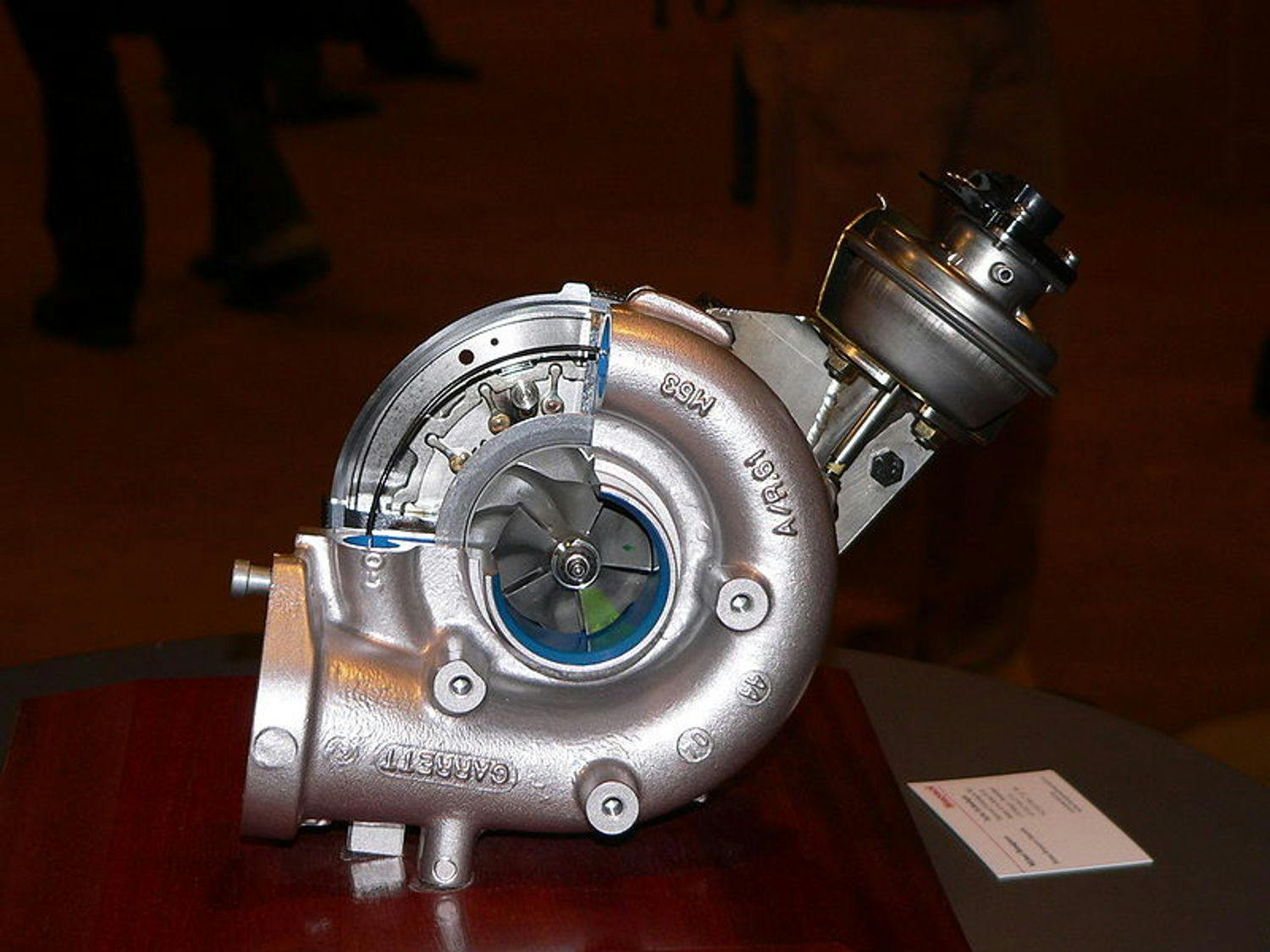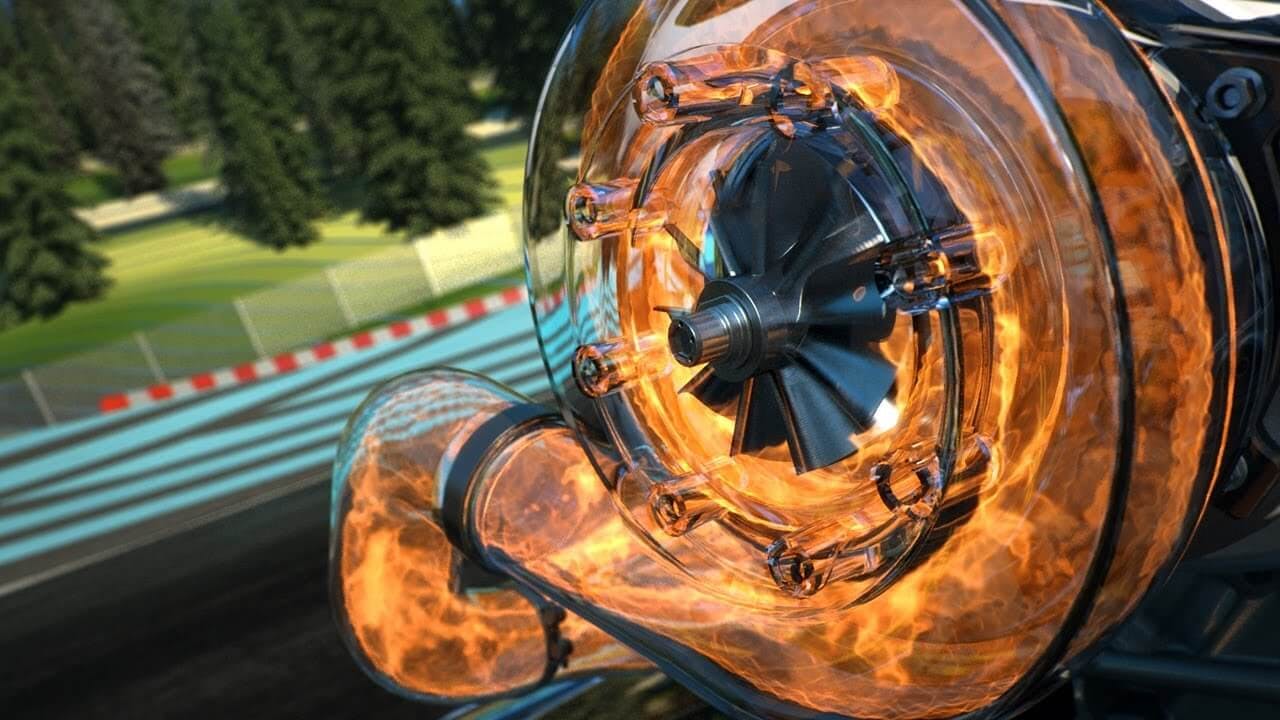Variable-geometry turbocharger (VGT): How does it work?

A variable-geometry turbocharger (VGT in short), sometimes called variable-nozzle turbine (VNT), is a type of turbocharger equipped with movable blades to adjust the airflow.
This article will show how a variable-geometry turbocharger works and its advantages and disadvantages.
Inhoudsopgave
How does a variable-geometry turbocharger work?
Turning these turbocharger blades changes the flow cross-section of the inlet channel and the angle at which the exhaust gases enter the turbines. By changing the flow cross-section of the inlet channel, the speed of the exhaust gases will change, affecting the speed of the turbine, affecting the amount of supplied compressed air. For reference, all turbo blades turn in sync by the same angle.
If the boost pressure at the engine's low speed is weak, the position of the vanes will change so that the flow cross-section of the exhaust gas inlet is narrowed. This causes the exhaust gases to accelerate, increasing the turbine speed and therefore boosting pressure.
On the other hand, at high engine speeds, when the filling pressure is sufficient, the position of the vanes changes in such a way that the flow cross-section of the exhaust gas inlet increases. This solution will make it possible to use as much energy as possible from the exhaust gases.

Turbocharger: What are its advantages, and what is turbo lag?
This way, the variable-geometry turbocharger can regulate and adapt its work to the current requirements of the combustion engine and thus utilize the total energy of the exhaust gases.
Simply put, a variable-geometry turbocharger mimics an optimally sized turbocharger throughout the power curve. The result is a turbocharger without a noticeable turbo lag.
Where is a VGT used?
This type of turbocharger is used exclusively for diesel engines. The reason is the susceptibility of the blade mechanism to high temperatures. For those who don't know, the temperature of the exhaust gases of gasoline engines is several hundred degrees Celsius higher than that of diesel engines.

Types of turbochargers: Turbo, Twin turbo, Twin-scroll, do you know them all?
Even in this case, however, there are exceptions so that you can find a turbocharger with variable blade geometry even with a petrol engine.
Advantages of a variable-geometry turbocharger
- Works in a wide range of engine speeds - copies an optimally sized turbocharger
- The price is comparable to the price of a simple turbocharger
Disadvantages of a variable-geometry turbocharger
- Lower reliability compared to a simple turbocharger
- Designed primarily for diesel engines - for gasoline engines, this solution requires the use of expensive, more durable materials